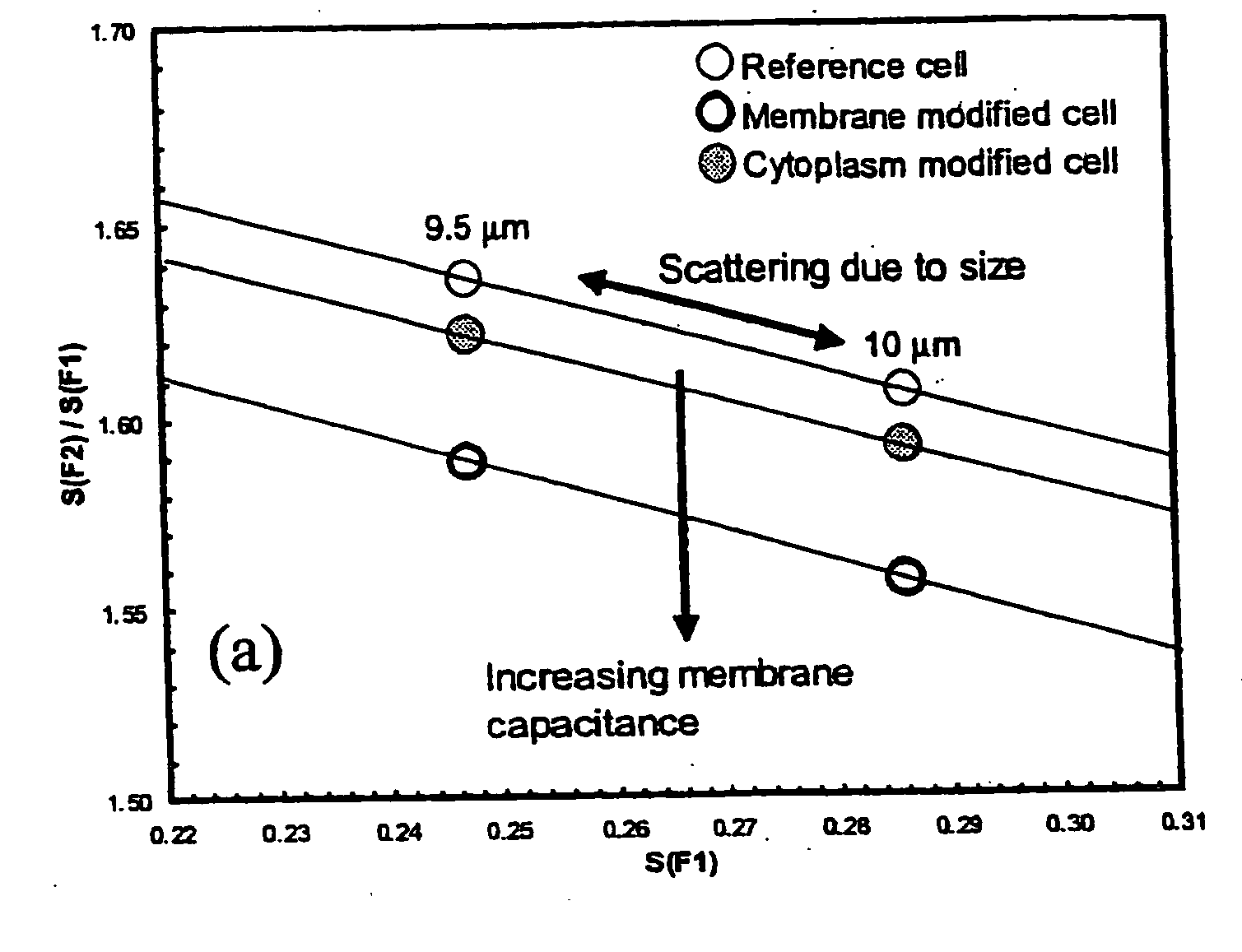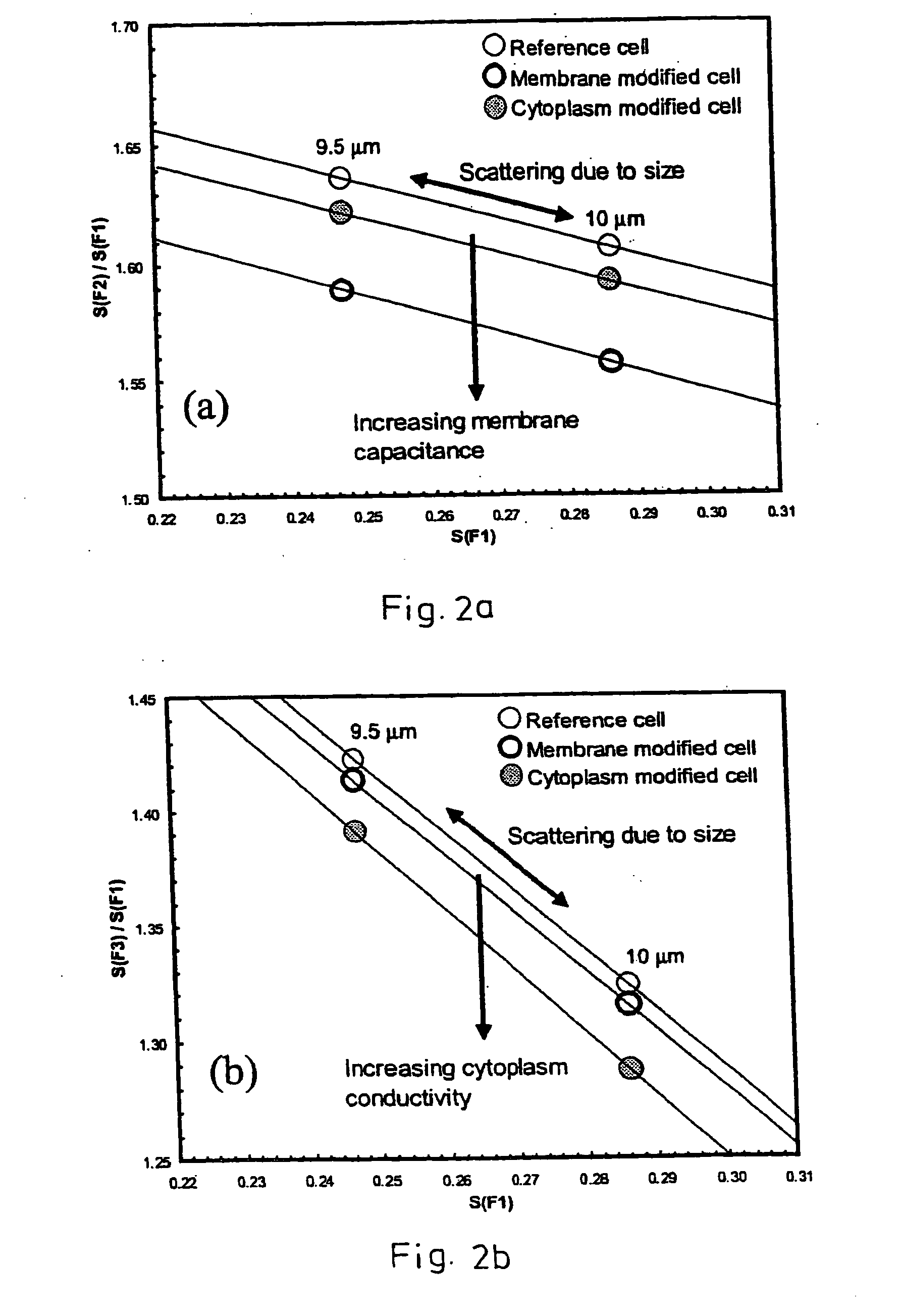Method for discrimination of particles in a flow cytometer
- Summary
- Abstract
- Description
- Claims
- Application Information
AI Technical Summary
Benefits of technology
Problems solved by technology
Method used
Image
Examples
Embodiment Construction
[0018] According to the method of the present invention, a pair of measurement electrodes and a pair of reference electrodes are arranged in a measurement channel, each for providing a measurement volume between the electrodes. A particle, preferably one particle, is moved through the pair of measurement electrodes, and the pairs of measurement electrodes and reference electrodes are admitted with the same input signals having different frequencies and the respective measurement values are determined, as known from the prior art. As know from the prior art, the input signal may be a current or voltage signal, and the signals may either have the same signal amplitude at different frequencies or may be only one signal having different modulated frequencies. The obtained current or voltage measurement values (referred to herein as “measurement values”) deliver the spectral impedances of the particle at different frequencies.
[0019] Then the measurement values at each of the frequencies...
PUM
 Login to View More
Login to View More Abstract
Description
Claims
Application Information
 Login to View More
Login to View More - R&D
- Intellectual Property
- Life Sciences
- Materials
- Tech Scout
- Unparalleled Data Quality
- Higher Quality Content
- 60% Fewer Hallucinations
Browse by: Latest US Patents, China's latest patents, Technical Efficacy Thesaurus, Application Domain, Technology Topic, Popular Technical Reports.
© 2025 PatSnap. All rights reserved.Legal|Privacy policy|Modern Slavery Act Transparency Statement|Sitemap|About US| Contact US: help@patsnap.com



